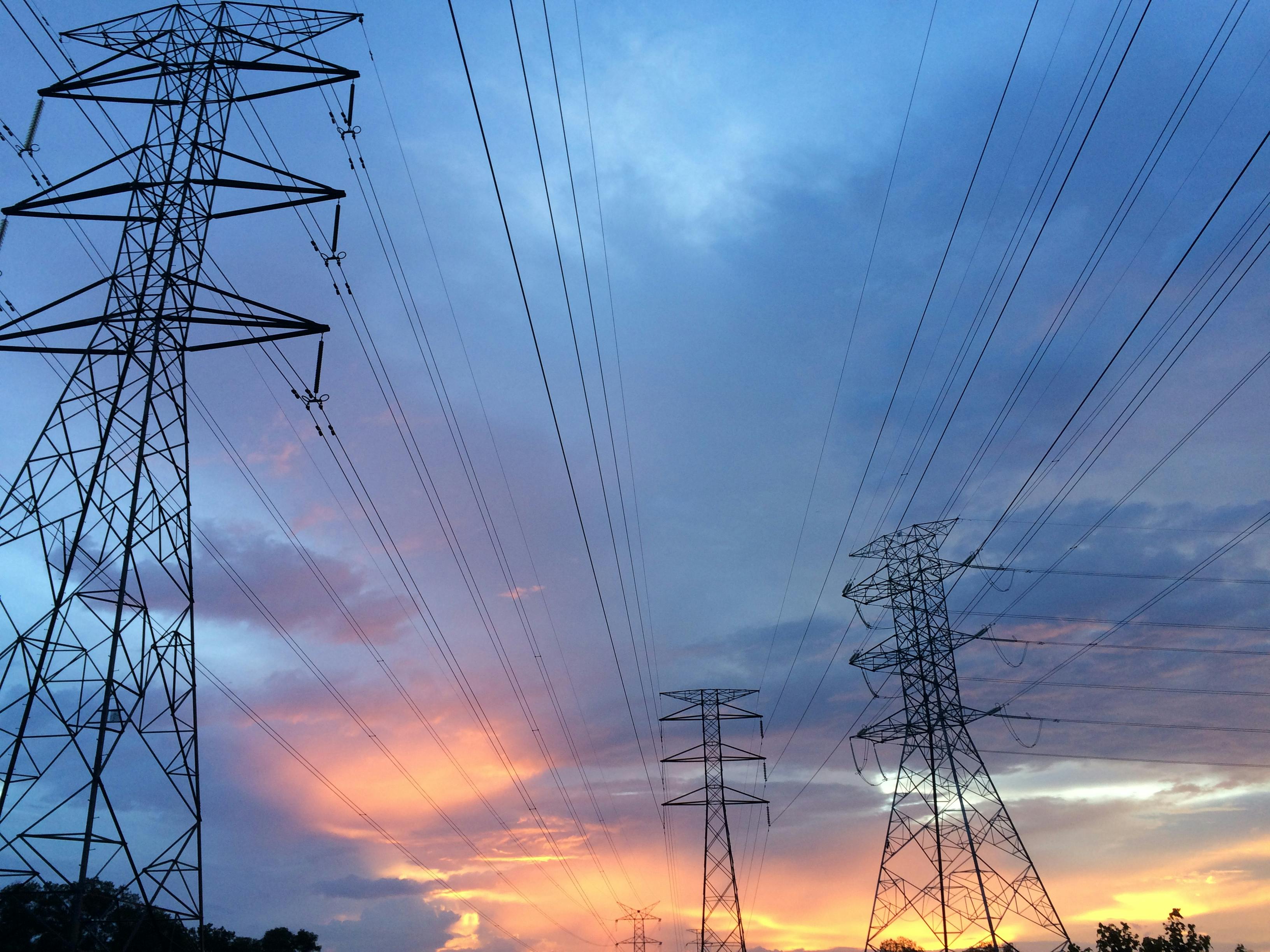
Voltage Optimization in Transmission Planning
As power demands grow and clean energy sources diversify, the choice of transmission voltage becomes more critical and more nuanced.
At Midgard, we routinely help utilities, regulators, and developers assess how best to move power over long distances in a way that balances capital cost, operational efficiency, and long-term value. This includes a fundamental technical and financial question:
When does it make sense to move up a voltage class — and when does it not?
Modeling Cost-Effective Transmission
To explore this question, we modeled the crossover point between 138 kV, 230 kV, and 500 kV transmission options under two load scenarios:
- 50 MW: typical of mining, industrial, or small regional grids
- 500 MW: representative of large-scale hydro, wind corridors, or intertie transfers
We evaluated two key factors:
- Capital Cost of Materials
- Operational Losses
Capital Cost of Material
Using linearized cost functions based on MISO’s 2024 MTEP Transmission Cost Estimation Guide [1], we estimated total capital cost of materials over distance for each voltage class.
The cost of a 500 kV system is higher in both load scenarios (50 MW and 500 MW). However, in the 500 MW case, there's a slight upward offset in cost. Higher-capacity systems require larger transformers and impact other lower-cost components (e.g., switchgear, line terminations), contributing to a modest baseline cost increase.
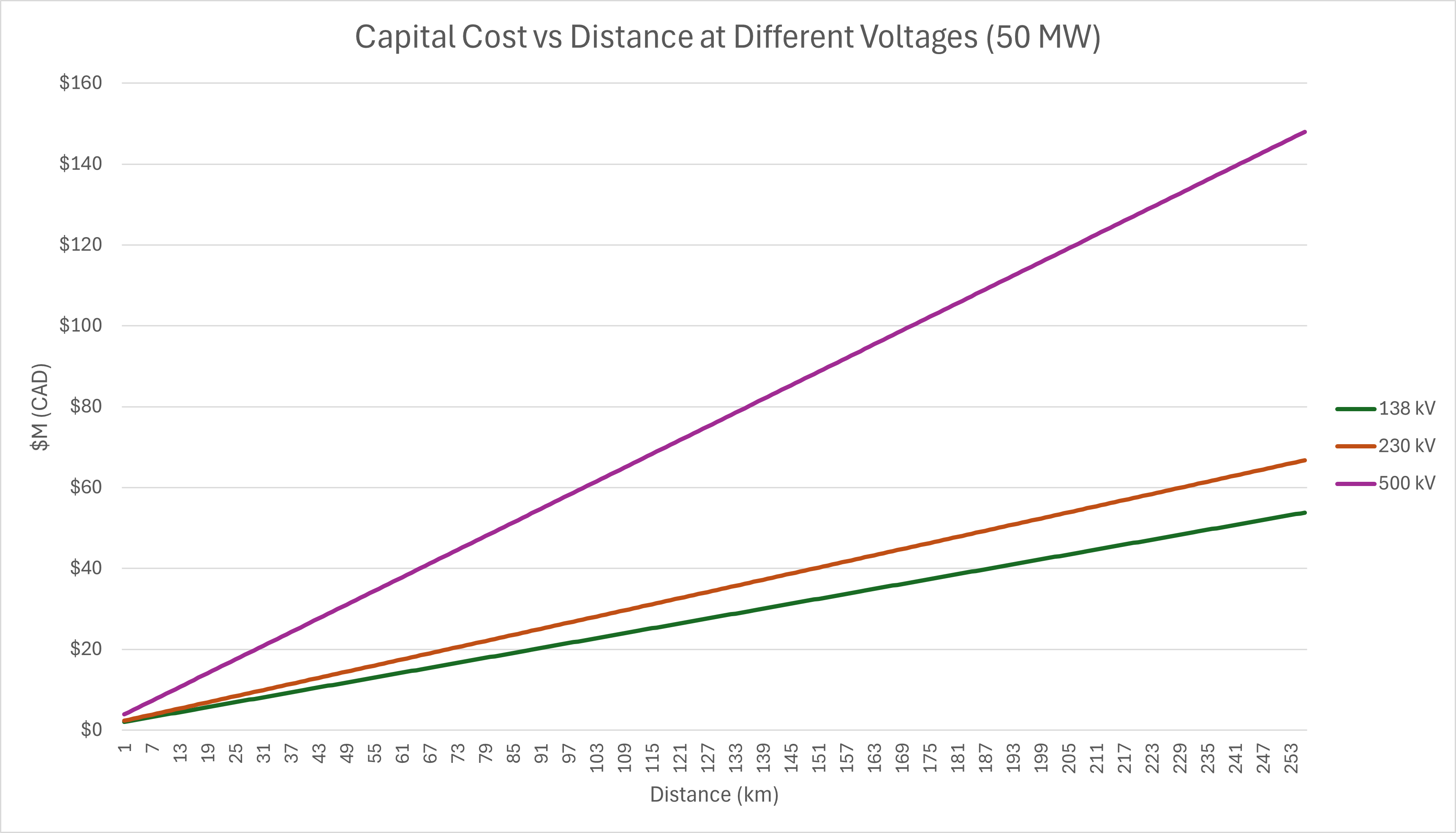
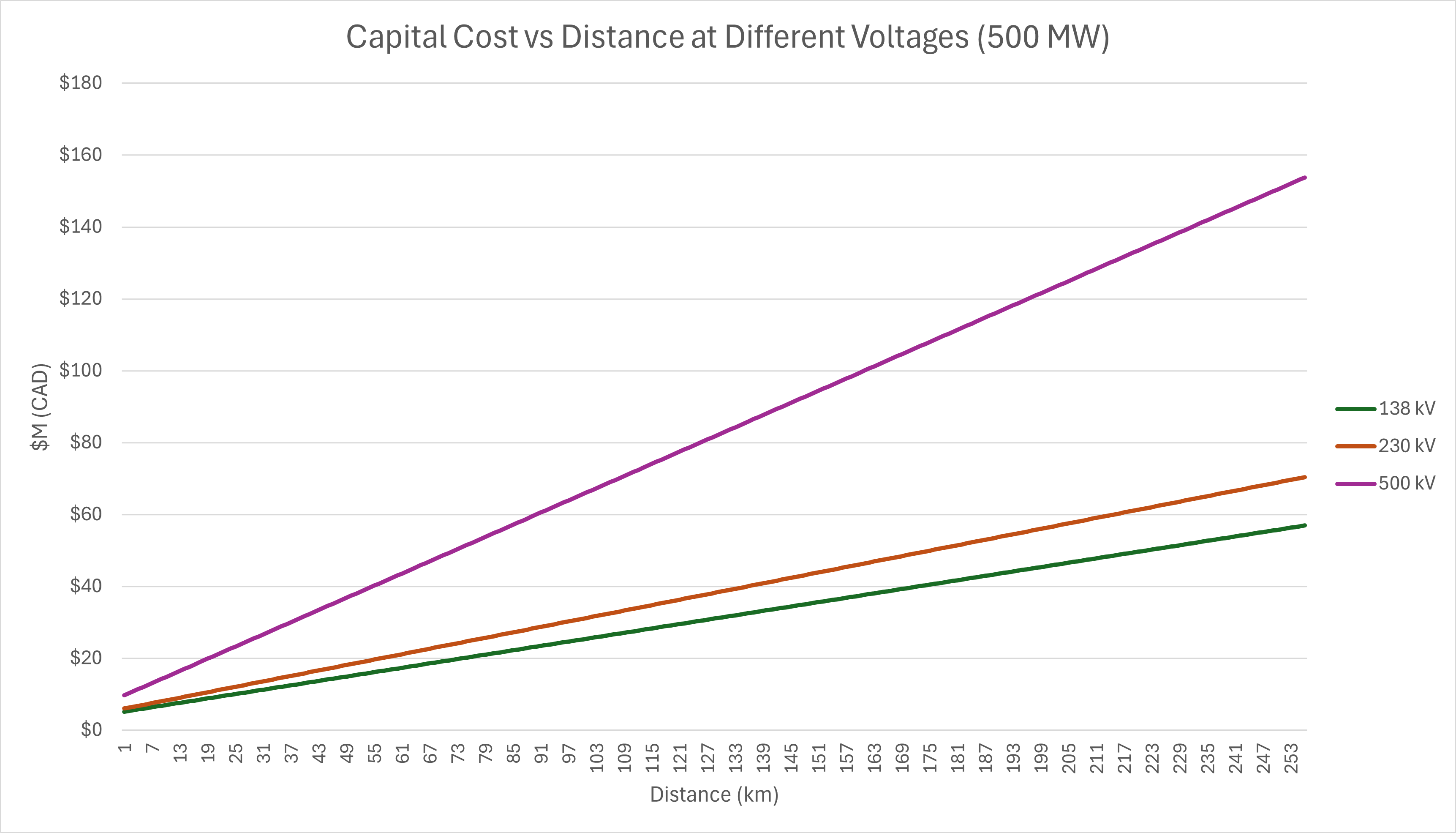
Operational Losses
Losses were calculated using the standard resistive formula
PLoss = (P/V)2 × R
Then annualized at $0.12/kWh CAD over the course of 1 year (8760 hours). The slope of the loss curves is significantly steeper for 138 kV compared to 500 kV. This is due to current being inversely proportional to voltage meaning lower voltage systems carry more current, which increases resistive losses.
Also notable: when power increases by a factor of 10 (from 50 MW to 500 MW), losses increase by a factor of 100. This quadratic relationship stems from the squared term in the loss formula, underscoring why higher voltage transmission is critical for bulk power transfers.
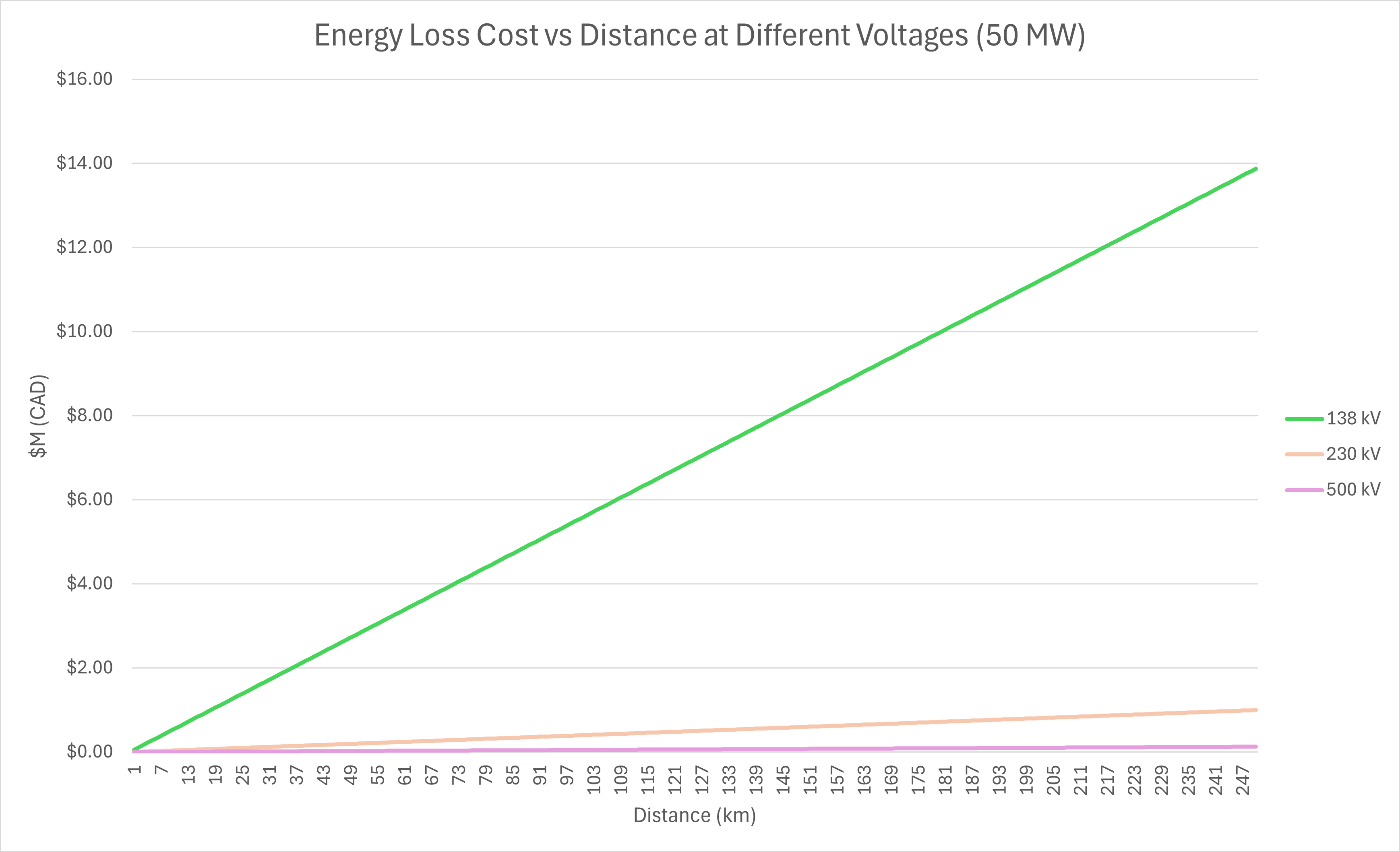
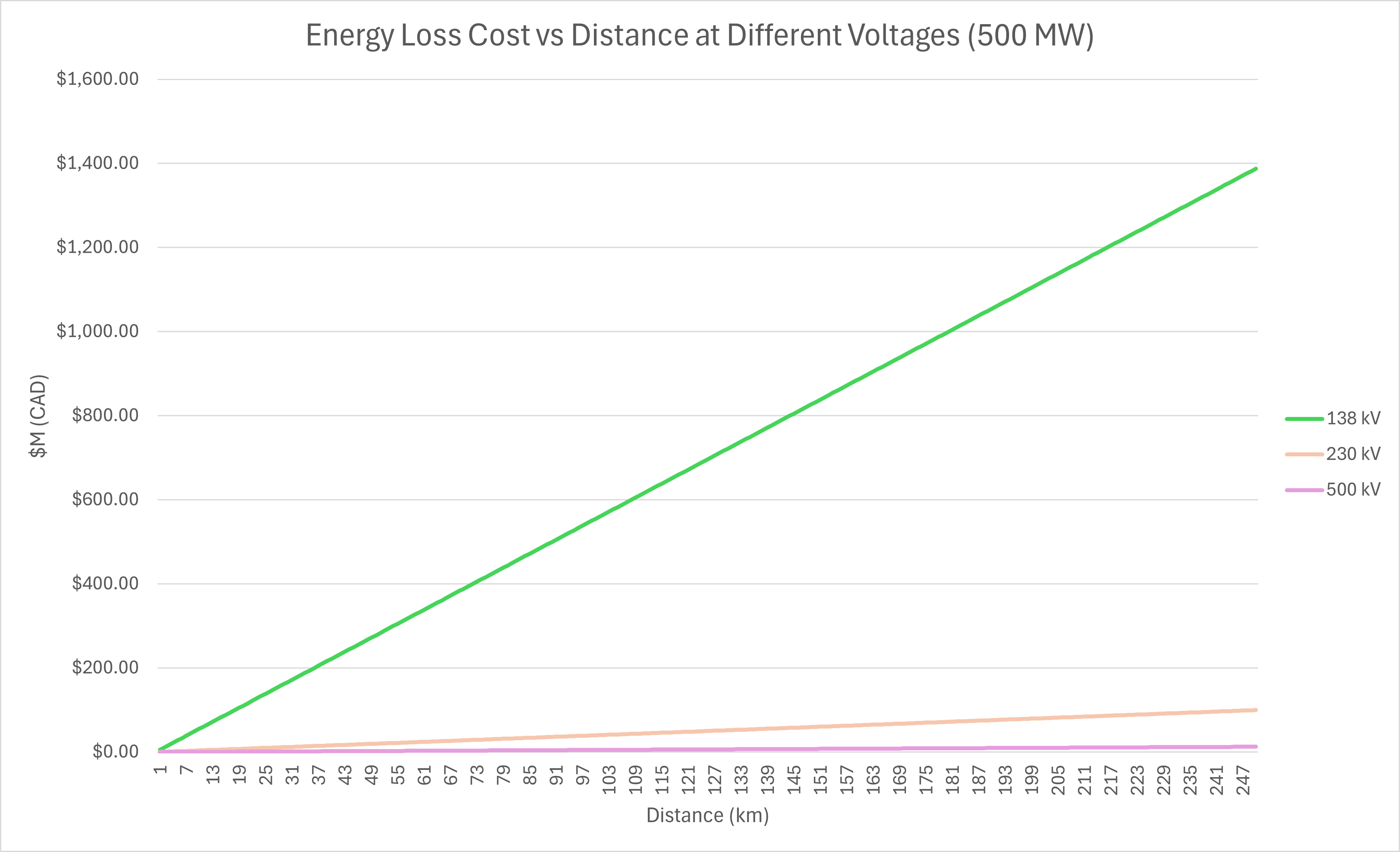
What We Found
For 50 MW transfers:
- 138 kV is more cost-effective up to ~131 km
- 230 kV becomes the better option beyond that point
- 500 kV remains uneconomical for this load, even over long distances
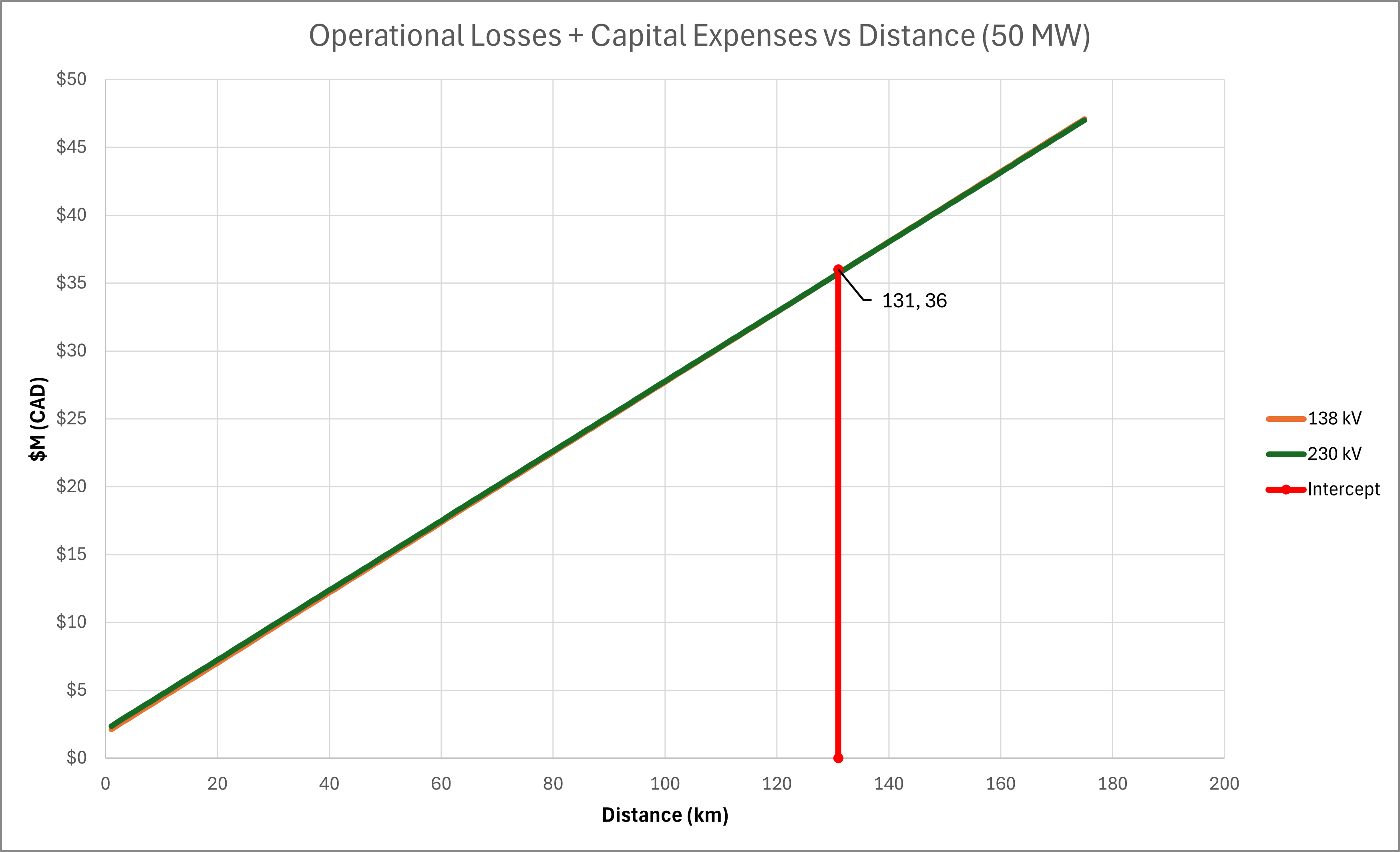
For 500 MW transfers:
- 230 kV is economical up to ~93 km
- Beyond that, 500 kV quickly becomes more attractive due to its dramatically lower losses
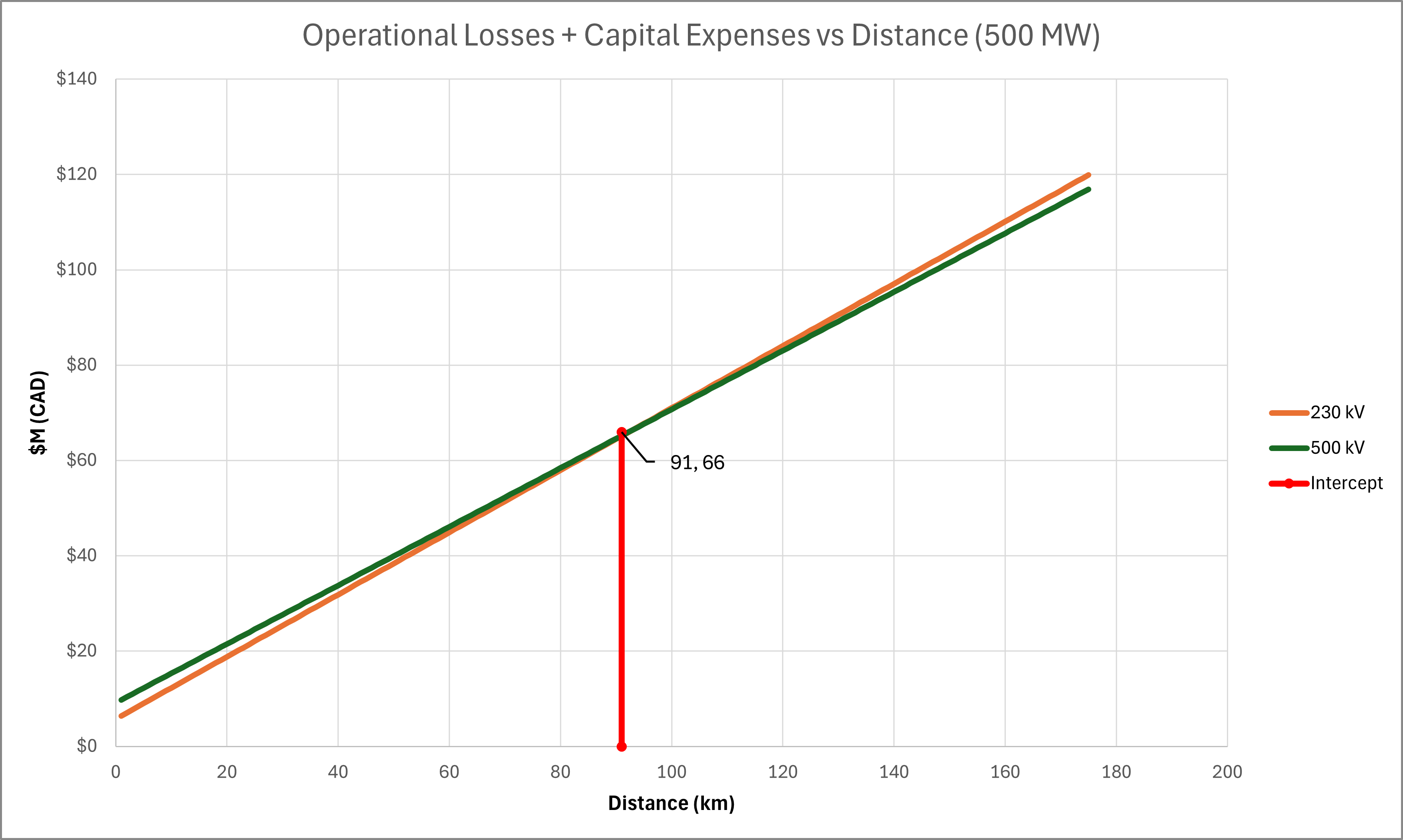
Power Losses Drive the Transition
The underlying driver is simple but powerful: line losses scale with the square of current. That means higher-voltage systems, which can transmit the same amount of power with less current, significantly reduce losses. This is especially true at higher capacities and longer distances.
This loss reduction is the key economic tipping point. In our analysis, we focused solely on material costs and annual energy losses. While higher-voltage lines may also enable higher power transfers, which could lead to increased revenue
Real-World Planning Needs Real-World Complexity
Of course, cost curves don’t tell the whole story. Our analysis assumes idealized terrain and line geometry. It doesn’t account for:
- Terrain, access, or environmental constraints
- Substation conversion costs
- Regulatory, ROW, or Indigenous consultation timelines
- System performance (e.g. stability margins, inertia, N-1 contingency impacts)
But that’s exactly the point: screening tools like this help identify where further study is most valuable.
Looking Ahead
We believe utilities and regulators can make better infrastructure decisions when they start from well-grounded techno-economic assessments. That’s why we build our models to be transparent, adjustable, and grounded in public data.
Whether you’re evaluating a long-distance intertie, planning for regional growth, or simply optimizing a new load connection. And understanding the crossover points helps avoid overbuilding or underbuilding.
At Midgard, we’re ready to support that decision-making with tools, insight, and engineering judgment.
[1] Midcontinent Independent System Operator (MISO), MISO Transmission Cost Estimation Guide for MTEP24, May 1, 2024. [Online]. Available: Link.
Values were converted to kilometers and CAD within our model
